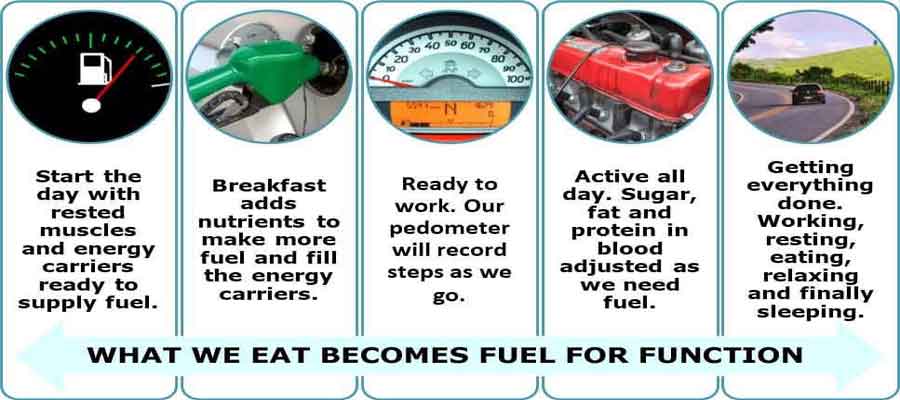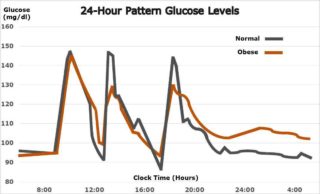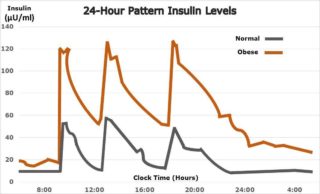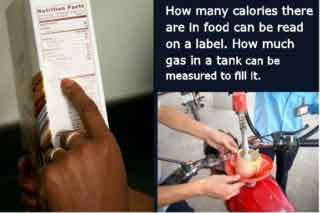Telehealth Reverse Diabetes And Stop Excess Calorie Toxicity | Free Trial In Texas

Metabolic Syndrome and Type 2 Diabetes feature too much fuel for work being done. Cells of muscle, liver and fat are fully charged with energy carriers. No more fuel accepted. Nutrients keep coming. Blood sugar keeps rising. Pancreas continues secreting insulin.
We call it Metabolic Syndrome and blame it on Insulin Resistance. It’s really Fuel Resistance.
High levels of insulin and other secretions released into blood have toxic effects. It all creates an Excess Calorie Toxicity Syndrome.
To learn more about the programs Herd Healthcare offers, our website is:
www.herdhealthcare.com
What is Metabolism?
Metabolism is the chemical activity in our cells.
Cells of our body act like tiny machines. They convert fuel into energy for chemical reactions and mechanical work. They build and repair structures, secrete molecules, and regulate normal function.
All cells use sugar, fatty acids and proteins as fuel for their function.
Some molecules are converted immediately into chemical or mechanical work. The rest are converted into energy carriers and stored for work when needed.
Energy needs of cells depend on the work they’re doing. When resting, they need very little energy. When working, they need a lot more. For example, during strenuous exercise, skeletal muscle uses fifty times more energy than when it’s resting.
What we eat becomes fuel for function.
Consuming food, extracting nutrients and converting them to fuel takes some time. Fuel is not immediately available and converting it does require some energy. Much more energy is required during normal daily activities. Those requirements can occur suddenly. The least energy is required while sleeping.
Fuel is available when we need it.
In some situations, fuel suddenly is required for work. For sudden demands, energy carriers are charged up and stored right in the active cells. More slowly, sugar, fatty acids and proteins are absorbed from the blood. Inside the cells, they are converted to fuel fairly quickly. Then, if that’s not enough, liver, fat tissue and skeletal muscle are converted to sugar and fatty acids. But that takes a little longer.
Balancing intake of nutrients and energy for work.

At the end of the day, everything balances out. If energy for work was more than energy in food consumed, sugar, fat and protein in liver, fat and skeletal muscle are taken down. If food consumed contains more fuel than required for work, the excess nutrients are stored in fat tissue.
Storage Of Excess Calories
High blood levels of sugar.
Insulin secreted by the pancreas signals cells to absorb sugar, fatty acids and proteins from the blood. As work requiring energy is completed, fuel is converted to energy carriers for short-term storage.
Cells continue to absorb nutrients as long as they require more fuel for work. Finally, when they have all the fuel they need for work and energy carriers are fully charged, they no longer respond to insulin. They simply stop absorbing sugar and fatty acids from the blood.
No more fuel needed for work.
 As long as levels of sugar and fatty acids remain high, the pancreas keeps secreting more insulin. As insulin levels keep rising, they stimulate fat tissue to absorb excess calories. Cells in fat tissue are less sensitive to insulin than skeletal muscle and liver.
As long as levels of sugar and fatty acids remain high, the pancreas keeps secreting more insulin. As insulin levels keep rising, they stimulate fat tissue to absorb excess calories. Cells in fat tissue are less sensitive to insulin than skeletal muscle and liver.
Takes more insulin to move excess nutrients into fat tissue than into skeletal muscle and liver.
No more fuel accepted.
Slower and lower response to insulin when muscle and liver are already full, is called insulin resistance.
Storing excess calories.
 As excess nutrients are stored in fat tissue day after day even fat tissue stops absorbing excess nutrients. Gradually, more fat tissue is formed to take in sugar and fatty acids from circulating blood. Forming new fat cells requires high levels of insulin in blood.
As excess nutrients are stored in fat tissue day after day even fat tissue stops absorbing excess nutrients. Gradually, more fat tissue is formed to take in sugar and fatty acids from circulating blood. Forming new fat cells requires high levels of insulin in blood.
Overweight and obese individuals keep building new fat cells. More and more new fat tissue requires more and more insulin to keep levels of sugar and fatty acids in blood in a safe range.
Eventually, the pancreas can no longer secrete enough insulin to keep up with all the demands for more insulin.
Daily Patterns Of Sugar And Insulin In Blood
Clinical studies.
Investigators in Chicago measured concentrations of glucose from sugar and insulin from the pancreas in 29 men and women who did not have diabetes. Fourteen of the subjects had normal weight and 15 were obese. All were given 3 meals with 14 kcal/lb and blood was sampled several times each hour for 24 hours.
Levels of glucose in blood.

The first figure shows levels of glucose in blood before and after 3 meals and overnight. The only difference between normal and obese subjects was higher levels of glucose in obese individuals after the evening meal and overnight.
Levels of insulin in blood.

The second figure shows levels of insulin in blood before and after 3 meals and overnight. Difference in levels of insulin to remove glucose from the blood in obese subjects were more than twice the levels measured in subjects of normal weight.
What makes the difference?
 This enormous difference in insulin requirements was caused by the difference in total kcal/day. Subjects of normal weight were given about 2,000 kcal/day while the obese subjects were given about 3,000 kcal. Extra insulin was required to remove excess glucose from blood and deposit it into fat tissue.
This enormous difference in insulin requirements was caused by the difference in total kcal/day. Subjects of normal weight were given about 2,000 kcal/day while the obese subjects were given about 3,000 kcal. Extra insulin was required to remove excess glucose from blood and deposit it into fat tissue.
How would anyone overweight/obese know there’s a problem?
Couldn’t tell from levels of sugar in the blood. After fasting with nothing to eat all night blood sugar levels were less than 100 mg/dL in both groups.
Couldn’t tell from levels of sugar in the blood 2 hours after each meal. Blood sugar levels were less than 140 mg/dL in both groups. Never reached more than 180 mg/dL at any time.
What happened?
We don’t know the body composition of those test subjects. We can only guess. It is highly likely that Maximum Weight Circumference was greater then 35 inches in the obese women and greater than 40 inches in the obese men.
Storage of fat in the abdominal cavity almost certainly was greater in the obese subjects than in the subjects of normal weight.
Toxic Effects Of Excess Calorie Storage
It is hard to ignore these effects of Excess Calorie Toxicity.
Failure to remove sugar and fatty acids from blood.
• Cause of Type 2 Diabetes
• Risk of Ketoacidosis
Harmful effects of increased insulin levels in blood.
• Increased Sodium Retention by Kidneys
• Increased Blood Pressure
• Increased Response to Adrenal Steroids
Release of fatty acids into liver.
• Increased Production of Triglycerides
• Decreased Production of HDL
• Decreased Liver Function
Secretions that damage microvascular circulation.
• Loss of Vision
• Chronic Renal Disease
• Loss of Normal Nerve Function
There are several ways to start working together.
![]()
❶ Contact us by Secure Messaging (click icon in Lower Right Corner) to help you get started, (or)
❷ Send me an e-mail or chat by Hangouts jaherdmd@herdhealthcare.com
• tell me some measure you will make several times during the
next week such as Fasting Blood Glucose or Body Weight
or Pedometer readings
• tell me something about what you will eat or what you will do
for exercise or how you will use your medication
❸ Sign up for trial run coaching.
 We are pleased to share our blog articles with you, and we are always interested to hear from our readers. Our website address is: www.herdhealthcare.com
We are pleased to share our blog articles with you, and we are always interested to hear from our readers. Our website address is: www.herdhealthcare.com





8 comments
Jessie
February 19, 2019 at 4:26 pm
Wow, this piece of writing is pleasant, my sister is analyzing these kinds of things, thus
I am going to let know her. I’ve been surfing online more than 2 hours today, yet I never found any interesting article like yours.
It is pretty worth enough for me. In my opinion,
if all webmasters and bloggers made good content as you did, the web will be much more
useful than ever before. I will right away grab your rss as I can’t find your email subscription link or e-newsletter
service. Do you’ve any? Please permit me recognise in order that
I may subscribe. Thanks
Dr. J A Herd MD
February 20, 2019 at 6:31 am
Thanks Jessie for reading out my article and happy to listen that you find it interesting. You are welcome to link my blogs to your website if any. You can subscribe my latest blog by clicking on Push Notification appears on website.
PALEO24.COM
March 10, 2019 at 12:35 pm
It?s hard to find knowledgeable people on this topic, but you sound like you know what you?re talking about! Thanks
folorentorium
March 21, 2019 at 8:35 pm
You completed various good points there. I did a search on the issue and found nearly all folks will go along with with your blog.
dates in english grammar
March 22, 2019 at 12:52 pm
Good post! Thanks
Jessie Abegg
March 24, 2019 at 3:35 am
This is exactly what I was looking for. Thank you.
onlinebizzcoach
March 25, 2019 at 3:46 pm
You made some decent points there. I looked on the internet for the issue and found most individuals will go along with with your website.
Yoshie Rosecrans
January 26, 2020 at 10:31 am
Thank you for sharing with us, I think this website really stands out : D.